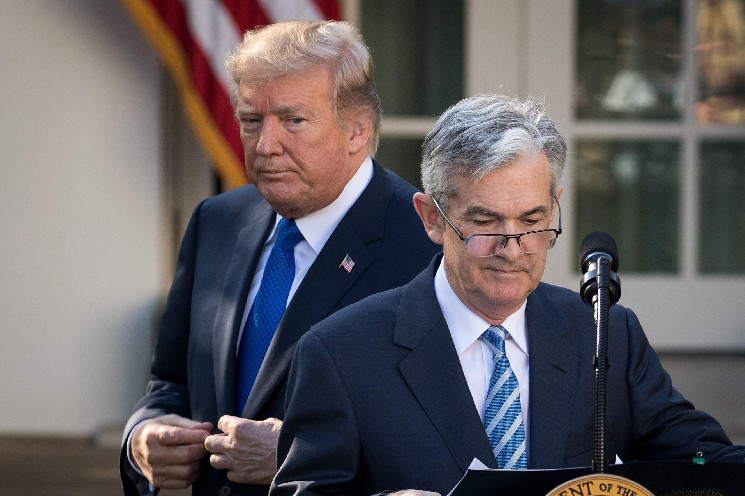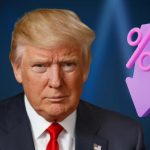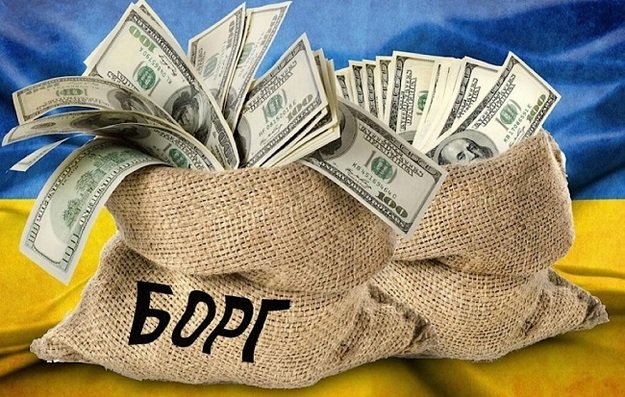Today, President Trump informed a crowd at Davos that he would mandate the Federal Reserve to lower interest rates—a move that many in the media quickly framed as “setting up a clash with the Fed.” The narrative suggests that political interference in monetary policy threatens the Fed’s cherished independence and risks economic harm. But the notion of an independent Federal Reserve, free from political pressure and acting solely in the public’s best interest, is more myth than reality.
The Fed’s historical record reveals a pattern of bending to political will, whether from the Treasury or the White House. Far from being an impartial steward of monetary policy, the Fed has routinely prioritized deficit spending and economic stimulus over sound money principles. Throughout history, whenever economic conditions tightened, the central bank caved to demands for easy money policies, fueling asset bubbles and perpetuating a boom-and-bust cycle that has eroded the purchasing power of the dollar.
The Fed’s Neutrality: Fact or Convenient Fiction?
Despite its claims of neutrality, the Fed’s independence serves more as a shield against accountability than a safeguard of economic stability. By branding itself as a technocratic institution above politics, it escapes scrutiny while wielding enormous influence over the economy. Manipulation of interest rates, unchecked monetary expansion, and inflation targeting have profound consequences for ordinary people, driving up the cost of living and deepening wealth inequality—all without republican oversight.
Adding to the problem is the Fed’s persistent ‘knowledge problem.’ Central planning of any kind is inherently flawed, and setting the price of money is no exception. Fed officials rely on outdated and incomplete economic data to make decisions, essentially guessing about the future while pretending to possess foresight. Even Fed Chairman Jerome Powell has admitted as much, comparing the Fed’s task to «navigating by the stars under cloudy skies.» Despite their best efforts, the Fed’s interventions consistently produce unintended consequences that ripple through the economy for years.
At its core, the idea of an independent central bank is incompatible with the constitutional principles of checks and balances. America’s founders designed the system to prevent any one branch of government from holding unchecked power, yet the Fed operates largely beyond reach of any authority. Some propose reforming the Fed by introducing congressional review of its inflation targets, full audits, and greater transparency measures. However, increasing oversight may not necessarily lead to better outcomes; instead, it could entrench short-term political decision-making at the expense of long-term economic stability.
Replacing Central Banks with the Bitcoin Protocol
This is where bitcoin presents a paradigm shift. As a disinflationary and eventually deflationary monetary asset, bitcoin renders the Fed’s control over monetary elasticity obsolete. With a fixed supply, infinite divisibility, and the ability to achieve final settlement over the internet without the circuitous and inefficient international banking system, bitcoin removes the need for central planning in money.
Under a bitcoin standard, the role of the Fed would naturally shrink, forcing it to align with republican principles of oversight and accountability. Instead of manipulating interest rates and money supply, the Fed’s remaining functions could be subject to scrutiny by elected officials to ensure they serve the interests of the people rather than entrenched financial elites.
President Trump’s demands for lower interest rates shines a spotlight on the shortcomings of our technocratic dollar system. Decades of easy money policies have ballooned the national debt, fueled reckless spending, and left savers scrambling to protect their wealth from inflation. While Trump’s push for lower rates may offer temporary relief to his voters, it does nothing to address the underlying issue—the inherent flaws of a centrally planned monetary system.
Meanwhile, mainstream economists warn that Trump’s pressure on the Fed could reignite inflationary pressures, particularly given his plans for tariffs and immigration policies. These measures could strain supply chains and labor markets, counteracting any benefits of rate cuts. The reality is that the Fed’s hands are tied; lowering rates too aggressively could trigger another inflationary spiral, while keeping them elevated risks deepening economic stagnation.
The elephant in the room is that the Fed has already quietly succumbed to political pressure on numerous occasions. From bailing out financial institutions in 2008 to funding government stimulus programs during the COVID-19 pandemic, the Fed has consistently prioritized political expediency over economic fundamentals. Its supposed independence is little more than a convenient talking point used when it suits those in power.
The Future of Finance On a Bitcoin Standard
The Fed’s unchecked power has profound implications for both economic stability and personal freedom. Rather than endlessly tweaking policies to achieve elusive stability, we now have an opportunity to rebuild a strong U.S. economy on a rock-solid foundation of cryptography and thermodynamics.
Replacing the Fed’s opaque decision-making processes with the bitcoin protocol would remove the need to trust a handful of unelected officials to set the price of money. Ultimately, the question isn’t whether the Fed should be independent—it’s whether such an institution should exist in its current form at all. The rise of bitcoin offers a compelling alternative that challenges the status quo, forcing us to rethink the very nature of money and economic governance.
While the political theater surrounding Trump’s calls for rate cuts will continue, the broader discussion should focus on building a future that doesn’t depend on the whims of central bankers but instead embraces a sound, fair, and forward-looking financial system.













